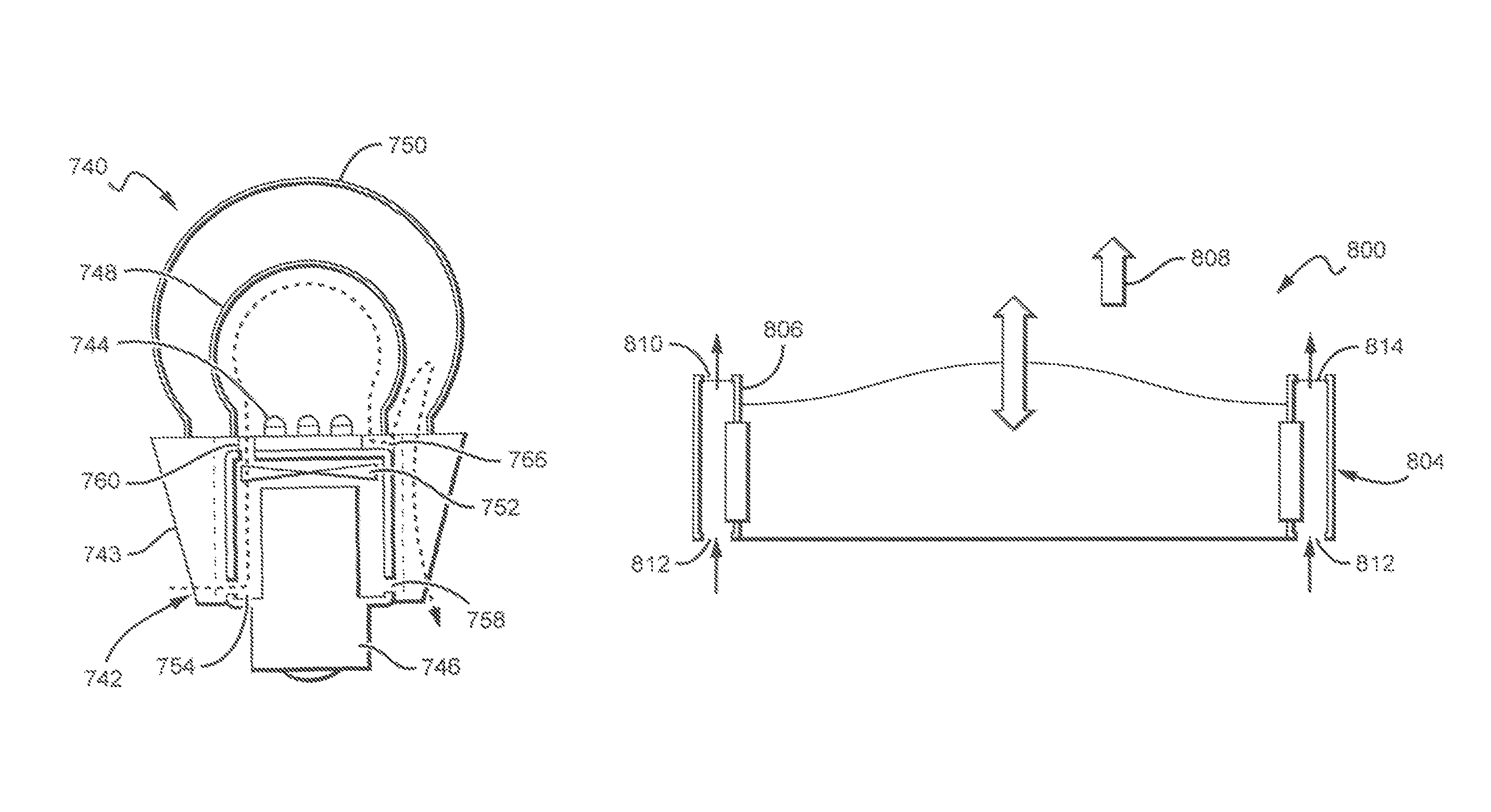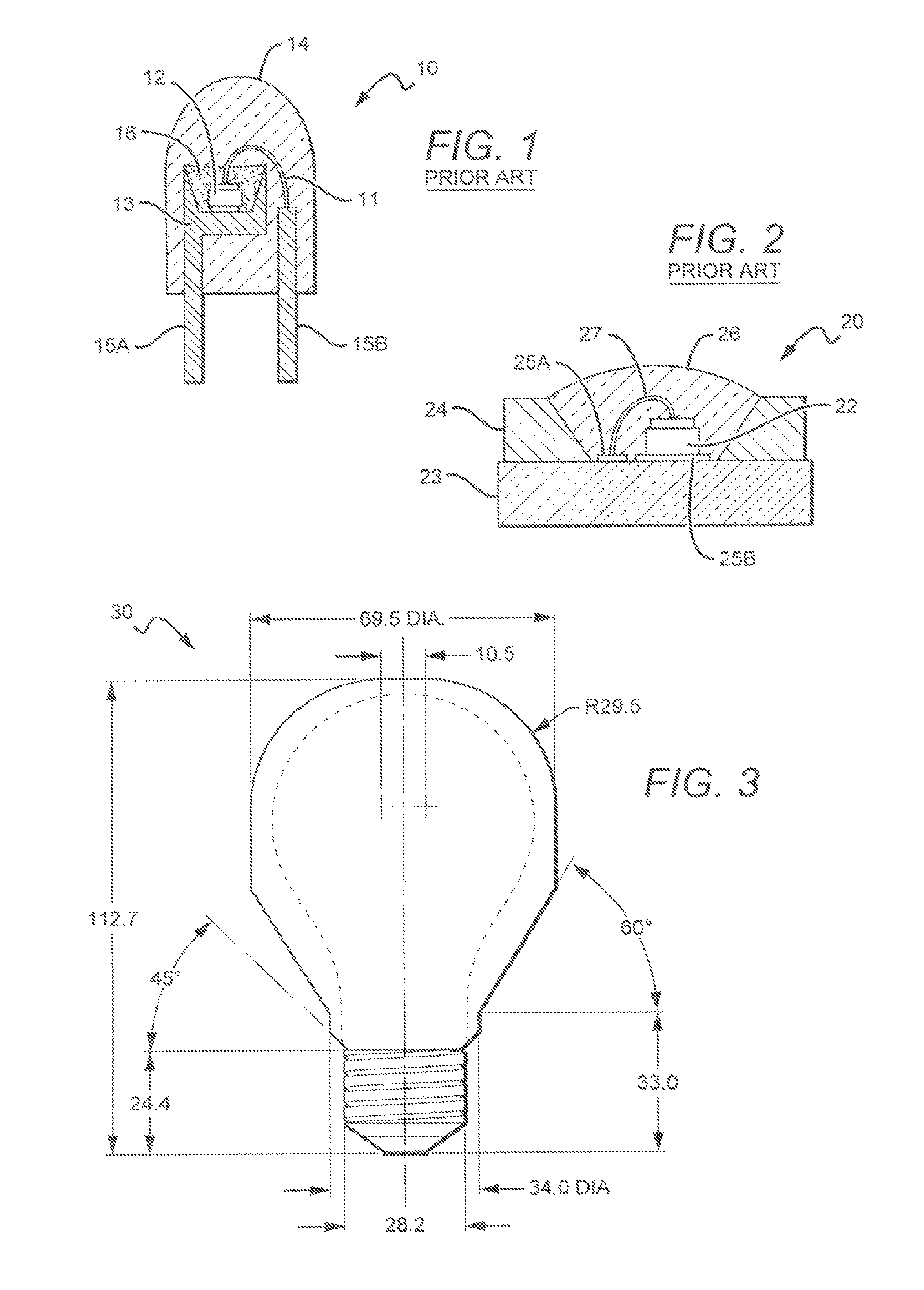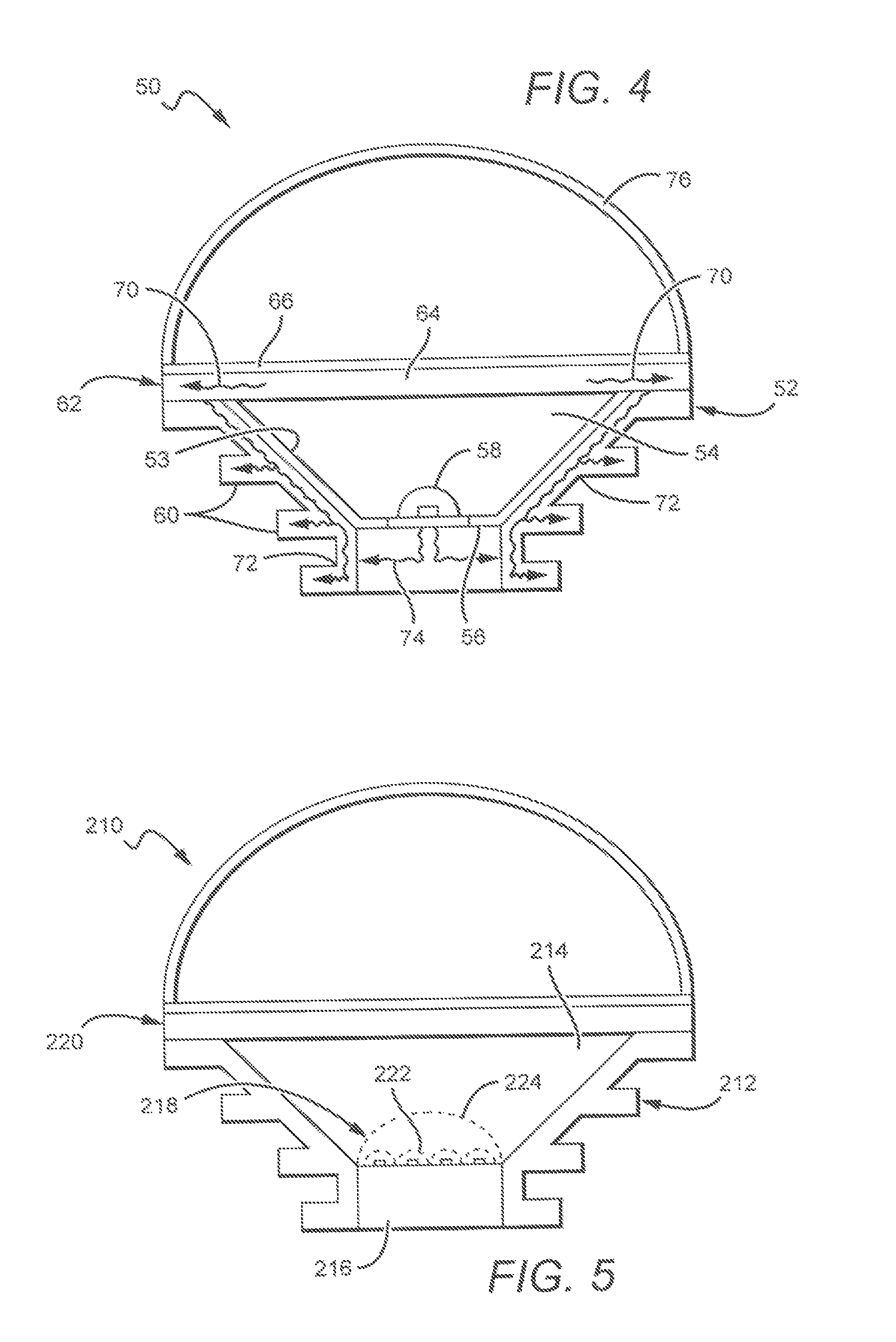LED lamp with active cooling element
a technology of active cooling element and led lamp, which is applied in the direction of indirect heat exchangers, semiconductor devices of light sources, lighting and heating apparatus, etc., can solve the problems of high inefficiency of lamps, chronic and acute poisoning, and loss of as much as 95% of input energy, so as to reduce the convective thermal resistance, enhance the convective heat transfer around elements, and increase the size of lamps or bulbs or their power consumption
- Summary
- Abstract
- Description
- Claims
- Application Information
AI Technical Summary
Benefits of technology
Problems solved by technology
Method used
Image
Examples
Embodiment Construction
[0062]The present invention is directed to improved solid state lamp or bulb structures that are efficient, reliable and cost effective. In some embodiments, the lamps according to the present invention can provide an essentially omnidirectional emission pattern from solid state light sources, while still having features that allow the lamps and their light sources to operate at reasonable temperatures. Some lamps can have light sources that comprise directional emitting light sources, such as forward emitting light sources, with the lamps including features to disperse the directional light source to a more uniform emission suitable for lamps. To allow operation at acceptable temperatures, the lamp structures can comprise active elements to assist in thermal management of the lamp structures and to reduce the convective thermal resistance around certain of the lamp elements. Reducing thermal resistance can increase the natural heat convection away from the lamp.
[0063]Some embodimen...
PUM
| Property | Measurement | Unit |
|---|---|---|
| reflectivity | aaaaa | aaaaa |
| reflectivity | aaaaa | aaaaa |
| reflectivity | aaaaa | aaaaa |
Abstract
Description
Claims
Application Information
 Login to View More
Login to View More - R&D
- Intellectual Property
- Life Sciences
- Materials
- Tech Scout
- Unparalleled Data Quality
- Higher Quality Content
- 60% Fewer Hallucinations
Browse by: Latest US Patents, China's latest patents, Technical Efficacy Thesaurus, Application Domain, Technology Topic, Popular Technical Reports.
© 2025 PatSnap. All rights reserved.Legal|Privacy policy|Modern Slavery Act Transparency Statement|Sitemap|About US| Contact US: help@patsnap.com



